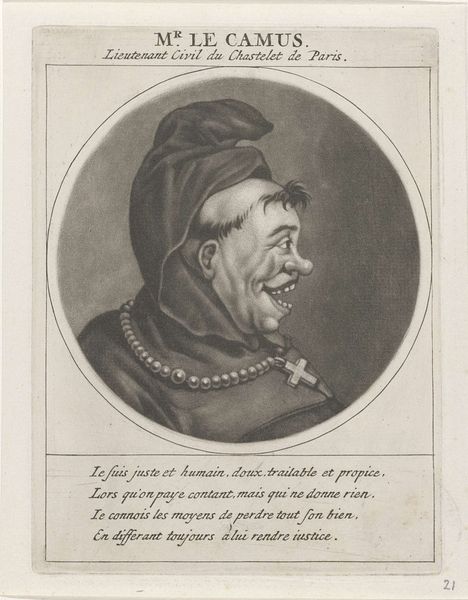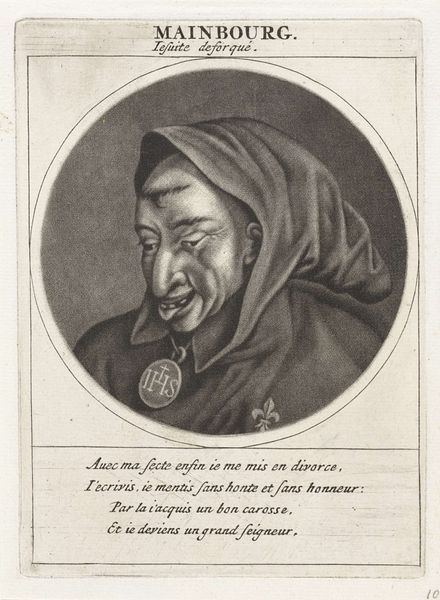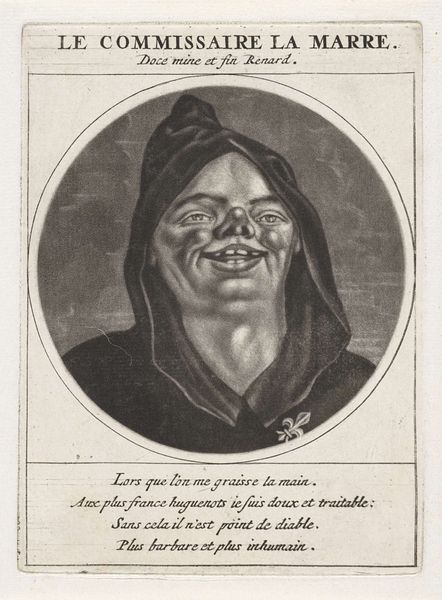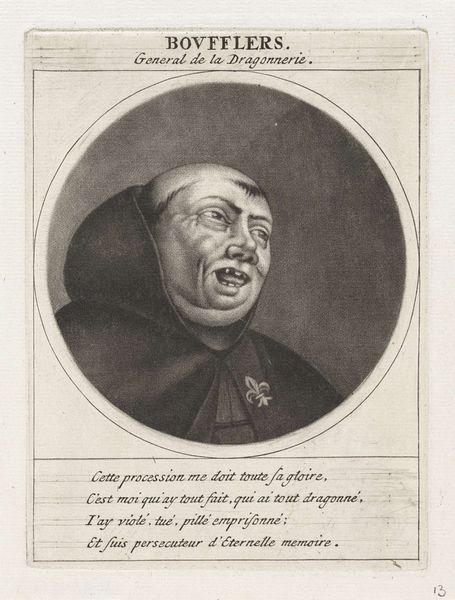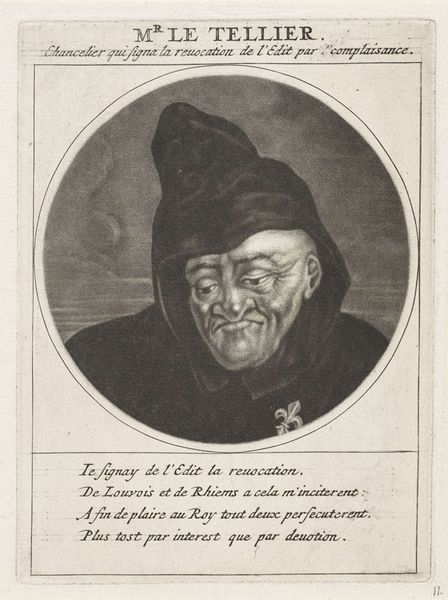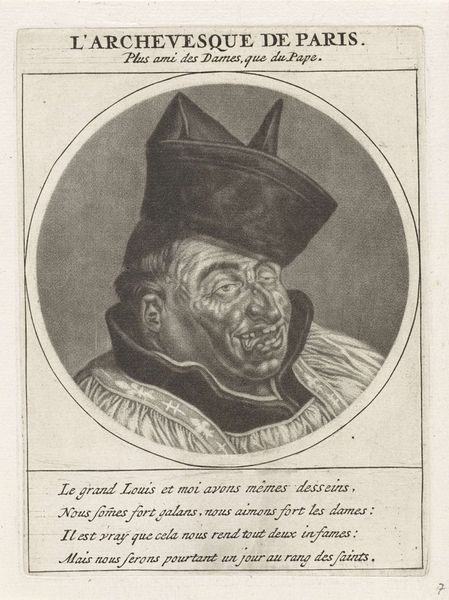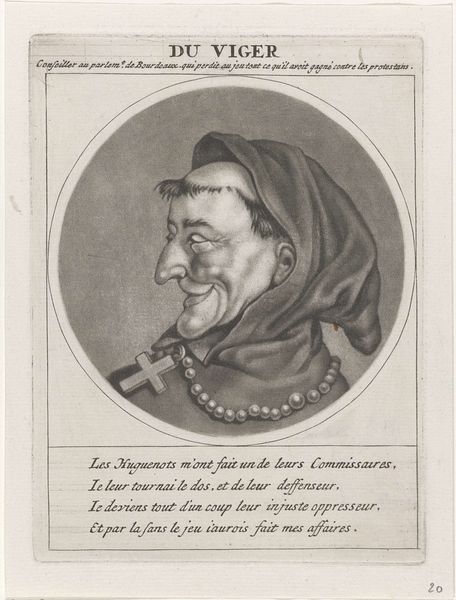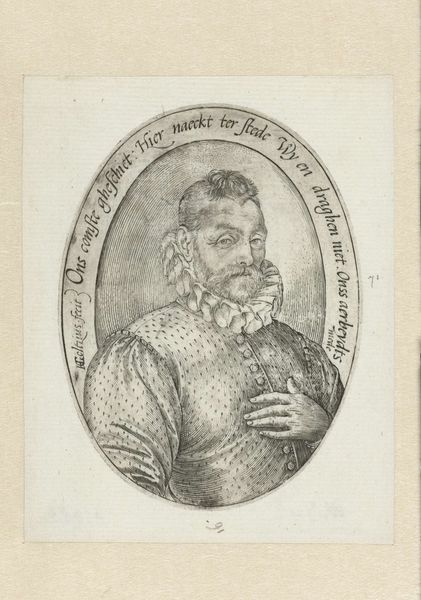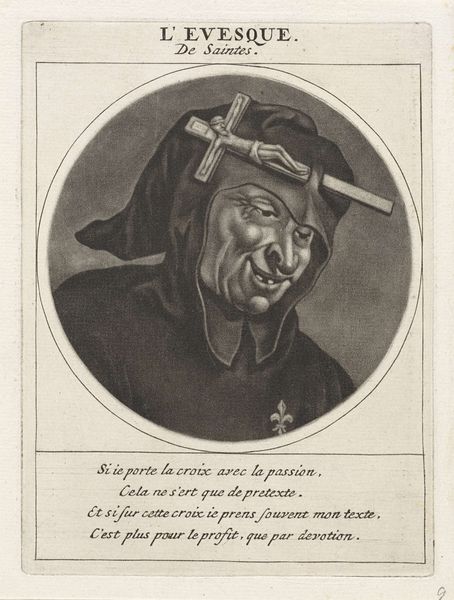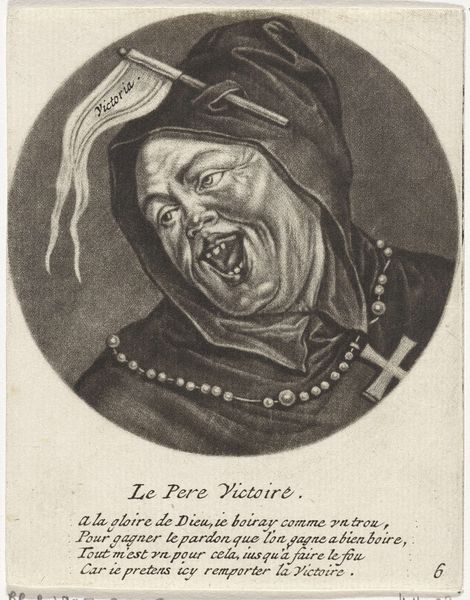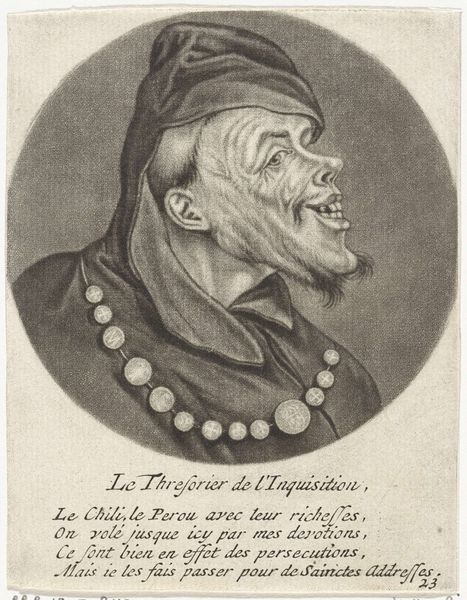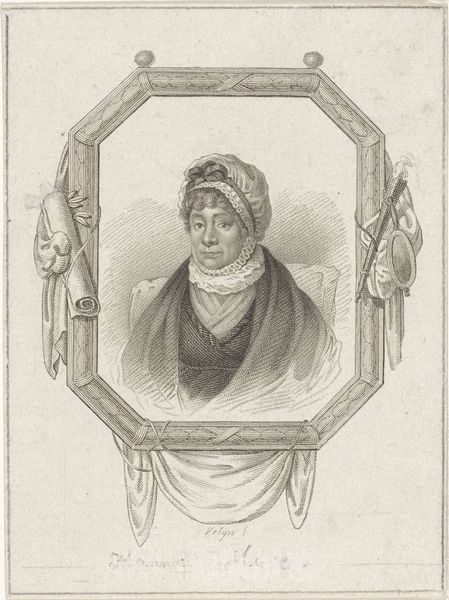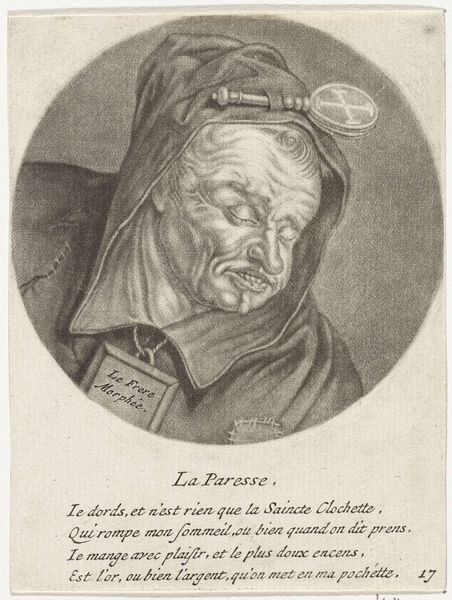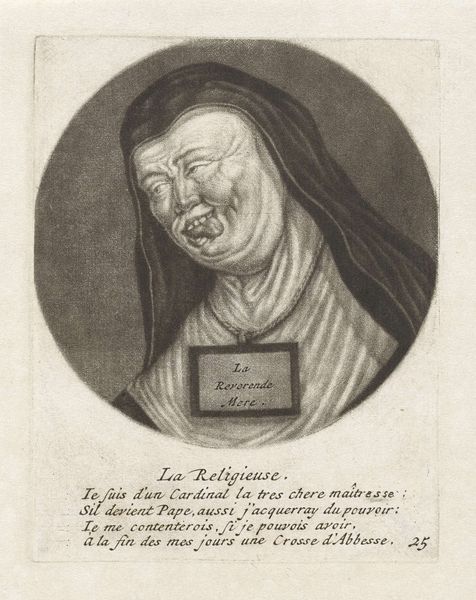
print, engraving
#
portrait
#
baroque
# print
#
engraving
Dimensions: height 146 mm, width 107 mm
Copyright: Rijks Museum: Open Domain
Jacob Gole made this print of Paul Pellisson, sometime between 1660 and 1737. Note the date, this artwork has been made in France during a time of religious conflict between Catholics and Protestants. The inscription above the portrait says that Pellisson “abandoned his religion to advance his affairs.” The verse below adds to this negative depiction, calling him a hypocrite in both the church and at court, who laughs at conscience. So what exactly is going on here? Pellisson was a lawyer and writer, who converted from Calvinism to Catholicism and later became a close advisor to King Louis XIV. The print then reflects the bitterness felt by some Protestants about Pellisson’s conversion, which they saw as opportunistic. In the cultural and political context of the time, conversion was not just a personal decision, but one with public implications. Historians can use sources such as pamphlets, letters, and official documents to gain a deeper understanding of the complex motivations and consequences of religious conversion in early modern France. The meaning of art is always contingent on its social and institutional context.
Comments
No comments
Be the first to comment and join the conversation on the ultimate creative platform.
